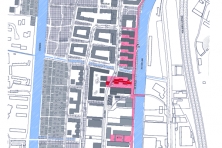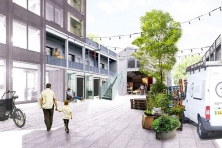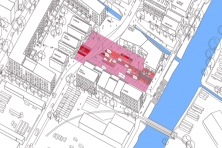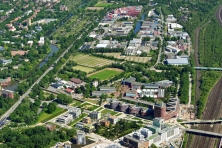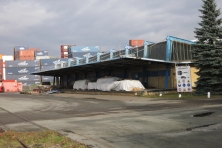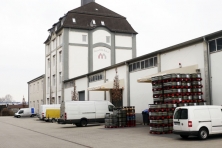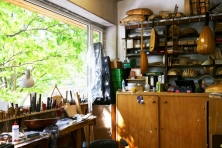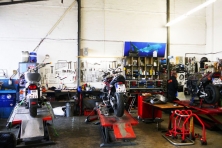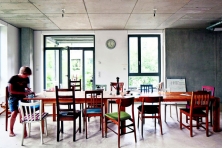In Between the Lines/ Zwischen den Zeilen
Hamburg (DE) - Lauréat
DONNÉES DE L’ÉQUIPE
Représentante d’équipe : Janna Hohn (DE) – architecte et urbaniste
Associé: Josh Yates (DE) – architecte
Jott architecture and urbanism, Solmsstraße 18, 10961 Berlin (DE)
+49 176 3233 4959 – info@jott-architekten.eu – jott-architekten.eu
Voir la liste complète des portraits ici
Voir la page du site ici

J. Hohn et J. Yates
INTERVIEW en anglais
Cliquer sur les images pour les agrandir
1. How did you form the team for the competition?
We first met when we were working together in London on large scale urban design and architecture projects over 10 years ago. We quickly realised that we work well together and have since collaborated on a number of projects. We formed our practice, Jott architecture and urbanism, in Berlin, where we seek to combine our interests in both research and the practical with a focus on the urban scale.
2. How do you define the main issue of your project, and how did you answer on this session main topic: the place of productive activities within the city?
The aim of our project is to sustainably integrate productive uses into the new high density, and often exclusive, quarters of the city through the development of a new mixed-use building (and spatial) typology set within a realistic urban infrastructure that allows space for all user groups. To realise this, we are suggesting a user-based strategy to ensure reasonable rents and a mixed community of users on a long-term basis. Our response to the topic of the ‘productive city’ is to first generate a vital culture of production and innovation on the site: this is achieved through a flexible new public space structure and facilities at the core of the scheme. Secondly through the infrastructure and new building typology we allow the space for productive users to thrive. Finally by providing the structure for a harmonious relationship with neighbours and a user-based development strategy we seek to safeguard productive user’s place in the quarter for generations to come.
3. How did this issue and the questions raised by the site mutation meet?
Our project builds on the industrial history of the site whilst connecting it into the already proposed uses of the new masterplan. The linear spatial and building typologies of the industrial area bordering the site in the South provide a part of the inspiration for our spatial concept. This spatial concept sets the scale of the communal spaces we create, which in turn has influenced the size of the user groups forming our mixed-use communities. The Jaffe Canal functions as a spine, with a path along the canal that connects the existing and the new. The uses on our site are carefully arranged to reduce the impact of commercial infrastructure, i.e. access routes to the production spaces, and the noise from deliveries, not just on the residents of our site but also the new masterplan beyond.
4. Have you treated this issue previously? What were the reference projects that inspired yours?
Yes, we both have been carrying out research in the field of the productive city and user-based development. Janna has recently finished writing a PhD on ‘Urban Backs’ in European cities, looking at the value of these traditional, often unplanned, productive spaces to the wider city and the strong displacement pressures caused by large masterplan projects that they are facing. The research examines detailed case studies in London, Hamburg and Berlin. A key theme of the PhD is the potential for user-based development strategies, in combination with the actions of planning authorities, to help retain productive uses in city central locations. Key reference projects for user-based projects were the ExRotaprint project in Berlin and the Camley Street Community Land Trust in London both of which employ innovative ownership and alternative financing models. Our Europan project can be seen as the practical answer to this current research.
5. Urban-architectural projects like the ones in Europan can only be implemented together with the actors through a negotiated process and in time. How did you consider this issue in your project?
Our project consists of three development phases. The first phase “seed” envisages a new public square for interim uses and festivals to create the areas identity. In the second phase “Incubator” more permanent buildings for productive uses are added and through the arrival of more users a community starts to develop. In the third phase “growth” the further site will be developed through mixed groups of producers, creatives and residents coming together to build user-based developments.
6. Is it the first time you have been awarded a prize at Europan? How could this help you in your professional career?
We have previously won a runner-up prize in the Europan 11 competition for Wittstock-Dosse, this success was followed by a further feasibility study, but has not been implemented so far. We view the prize for Europan 14 project in Hamburg as a great opportunity to implement a project applying the ideas from the wide ranging research in this field that we have been carrying out now for several years. The IBA Hamburg is one of the largest and best placed stakeholders in this field in Europe and we hope to collaborate with them to together to develop these ideas further and finally implement them!
